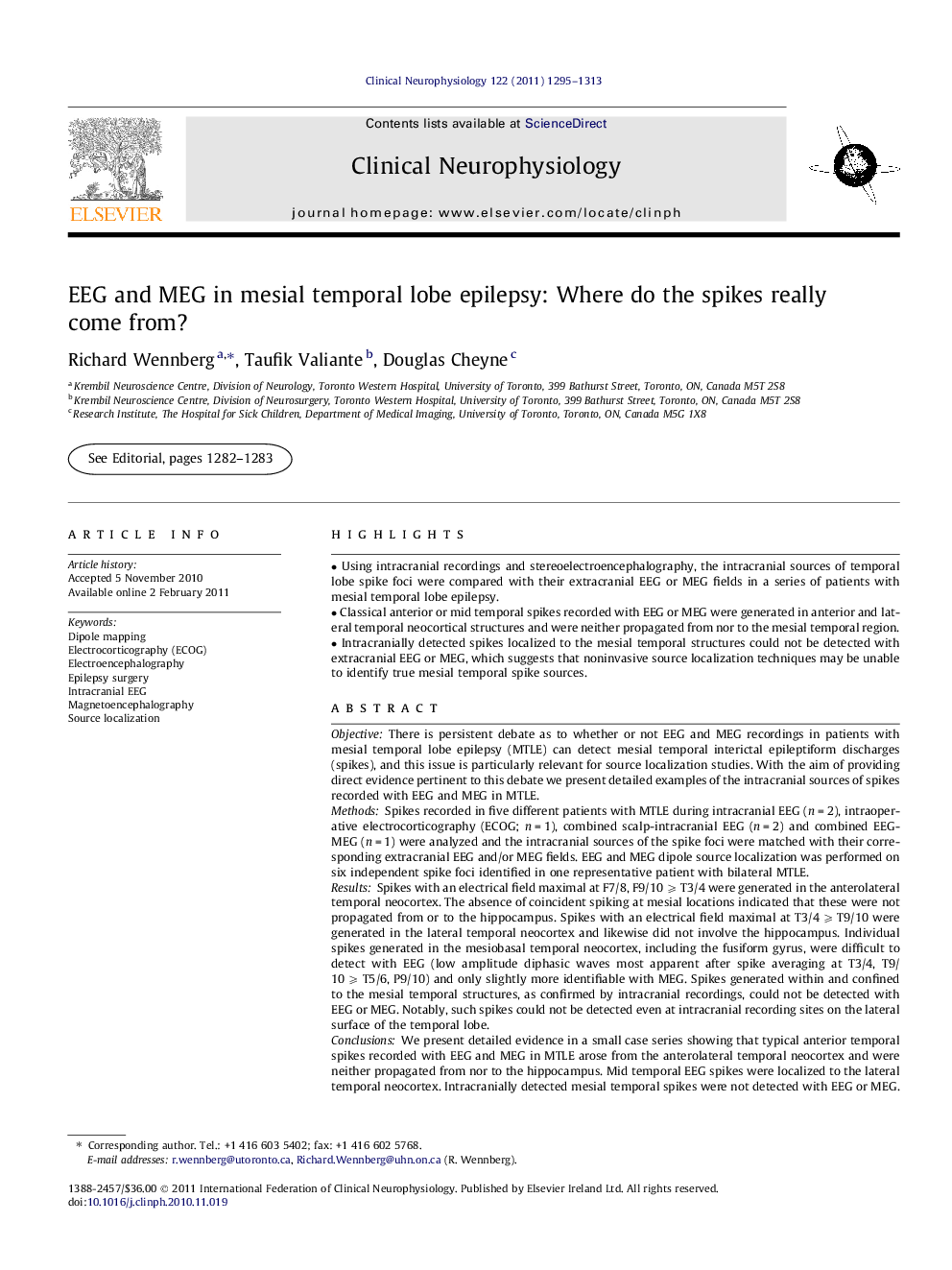| Article ID | Journal | Published Year | Pages | File Type |
|---|---|---|---|---|
| 3044773 | Clinical Neurophysiology | 2011 | 19 Pages |
ObjectiveThere is persistent debate as to whether or not EEG and MEG recordings in patients with mesial temporal lobe epilepsy (MTLE) can detect mesial temporal interictal epileptiform discharges (spikes), and this issue is particularly relevant for source localization studies. With the aim of providing direct evidence pertinent to this debate we present detailed examples of the intracranial sources of spikes recorded with EEG and MEG in MTLE.MethodsSpikes recorded in five different patients with MTLE during intracranial EEG (n = 2), intraoperative electrocorticography (ECOG; n = 1), combined scalp-intracranial EEG (n = 2) and combined EEG-MEG (n = 1) were analyzed and the intracranial sources of the spike foci were matched with their corresponding extracranial EEG and/or MEG fields. EEG and MEG dipole source localization was performed on six independent spike foci identified in one representative patient with bilateral MTLE.ResultsSpikes with an electrical field maximal at F7/8, F9/10 ⩾ T3/4 were generated in the anterolateral temporal neocortex. The absence of coincident spiking at mesial locations indicated that these were not propagated from or to the hippocampus. Spikes with an electrical field maximal at T3/4 ⩾ T9/10 were generated in the lateral temporal neocortex and likewise did not involve the hippocampus. Individual spikes generated in the mesiobasal temporal neocortex, including the fusiform gyrus, were difficult to detect with EEG (low amplitude diphasic waves most apparent after spike averaging at T3/4, T9/10 ⩾ T5/6, P9/10) and only slightly more identifiable with MEG. Spikes generated within and confined to the mesial temporal structures, as confirmed by intracranial recordings, could not be detected with EEG or MEG. Notably, such spikes could not be detected even at intracranial recording sites on the lateral surface of the temporal lobe.ConclusionsWe present detailed evidence in a small case series showing that typical anterior temporal spikes recorded with EEG and MEG in MTLE arose from the anterolateral temporal neocortex and were neither propagated from nor to the hippocampus. Mid temporal EEG spikes were localized to the lateral temporal neocortex. Intracranially detected mesial temporal spikes were not detected with EEG or MEG.SignificanceThe spikes recorded with EEG and MEG in MTLE are localized to neocortical foci, and not to the mesial temporal structures. Current noninvasive EEG and MEG source localization studies cannot accurately identify true mesial temporal spikes.
► Using intracranial recordings and stereoelectroencephalography, the intracranial sources of temporal lobe spike foci were compared with their extracranial EEG or MEG fields in a series of patients with mesial temporal lobe epilepsy. ► Classical anterior or mid temporal spikes recorded with EEG or MEG were generated in anterior and lateral temporal neocortical structures and were neither propagated from nor to the mesial temporal region. ► Intracranially detected spikes localized to the mesial temporal structures could not be detected with extracranial EEG or MEG, which suggests that noninvasive source localization techniques may be unable to identify true mesial temporal spike sources.
